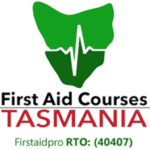8 Workshop Hazards: Workshops are hazardous environments that pose many risks to workers.
If you are required to work in a workshop as part of the job description, it is important for you to be aware of these hazards. This way, you will know how to protect yourself and your colleague’s health and safety at all times.
This blog outlines common workshop hazards and preventative measures that you can take to reduce the number of accidents and injuries.
Have a look around your workshop and start thinking about the changes needed to make sure everything is in the right place.
The Importance Of Workshop Safety
A workshop is a space where people work with tools, machinery, and materials to make, repair, or modify things. It can be found in a variety of settings, such as factories, construction sites, schools, and home garages.
Workshop safety is important for several reasons:
- To prevent injuries: Workshops can be dangerous places, with hazards such as moving machinery, chemicals, and fire. Proper safety measures can help to prevent accidents and injuries.
- To protect workers: Employees, contractors and visitors can be put at risk if safety is not a priority. It is the responsibility of the employer to provide a safe working environment, and employees should be trained in safety procedures and provided with proper protective equipment.
- To maintain equipment: Proper safety procedures can help to prolong the life of equipment and machinery. It can also prevent damage and wear caused by accidents and misuse.
- To maintain productivity: A safe working environment can minimise disruptions and downtime in the workshop caused by accidents. It also helps maintain productivity and prevent high costs from damages.
In addition, Australia has laws and regulations that require employers to provide a safe working environment and to protect employees from hazards. Failure to comply with these regulations can result in fines or legal action.
What Are The 8 Common Workshop Hazards?
Every role comes with different hazards and can make a workshop very dangerous places to work in. The top 8 workshop hazards include:
1. Moving Machinery
Moving machinery equipment such as lathes, saws, drills, and milling machines can cause serious injury if not properly maintained or used.
2. Electrical Hazards
Electrical hazards may come from exposed wirings, overloaded circuits, and malfunctioning equipment that can cause electric shock or fires.
3. Chemical Hazards
Chemical hazards include toxic or flammable materials that can cause skin irritation, respiratory problems, or chemical burns if not handled properly.
4. Fire Hazards
Fire hazards include flammable materials, poor ventilation, and malfunctioning equipment that can cause fires.
5. Noise Hazards
Loud machinery and tools are considered noise hazards that can damage hearing if not properly protected.
6. Ergonomic Hazards
Ergonomic hazards include repetitive motions, awkward postures, and heavy lifting that can cause musculoskeletal injuries.
7. Slip, Trip, And Fall Hazards
Cluttered floors, wet surfaces, and uneven flooring can cause accidents that may result in a slip, trip, or fall.
8. Hand And Power Tool Hazards
Improper use, lack of maintenance, and defects in hand and power tools can cause cuts, lacerations, and amputations.
It is important to identify hazards and take steps to eliminate or control them in order to ensure a safe workshop environment for employees and visitors.
How To Reduce Workshop Hazards?
Promoting a safe environment can make workers less likely to be injured or to take time off work due to illness.
Reduce workshop hazards with these simple steps:
Use Of Proper Housekeeping Practices
Proper housekeeping practices can help to reduce hazards in the workplace. This includes keeping work areas clean, organized, and free of clutter, properly storing materials and equipment, and properly disposing of waste materials.
Use Of Personal Protective Equipment (PPE)
Providing employees with the appropriate personal protective equipment (PPE) such as hard hats, safety glasses, gloves, and respirators can help to protect them from a wide range of hazards. This equipment should be properly maintained and replaced as needed to ensure maximum protection.
Promote Good Ergonomics
Good ergonomics can help to prevent injuries and illnesses caused by repetitive motions, awkward postures, and excessive force. Providing proper seating, lighting, and equipment to help employees maintain a comfortable and neutral posture.
Proper Maintenance Of Equipment And Machinery
Regular maintenance of equipment and machinery can help to prevent accidents and injuries caused by malfunctioning equipment. Regular inspections, testing, and repairs will ensure that all equipment is in good working condition.
Encourage A Culture Of Safety
Creating a culture of safety within the workplace is essential for reducing hazards. This includes encouraging employees to speak up and report potential hazards, recognising and rewarding safe behaviour, and involving employees in the development and implementation of safety protocols and procedures.
Conduct Regular Safety Meetings
Regular safety meetings can be an effective way to communicate information and updates to employees. It is also a way to provide a forum for employees to voice their concerns and suggestions for improving safety in the workplace.
Implement Safety Protocols And Procedures
Establishing clear and strict safety protocols and procedures is one of the most effective ways to reduce workplace hazards. This includes creating emergency evacuation plans, providing regular safety training to employees, and conducting regular safety audits to identify and address potential hazards.
Learn First Aid
In a workshop, there are many potential hazards that can lead to injuries or illnesses, such as cuts, burns, sprains, and broken bones.
In the event of an injury, prompt and appropriate first aid can help to stop bleeding, prevent infection, and reduce pain. First aid also helps stabilise the person’s condition until they receive more advanced medical care.
Investing in first aid training for workshop employees is an important step in promoting a safe and healthy work environment. It is a great way to ensure that your employees are well-equipped to handle any situation that may arise and to keep your workshop running smoothly.
Need First Aid Training?
Our Provide First Aid Course is designed to help individuals and groups comply with the regulations from Safe Work Australia, allowing you to work in different industries.
For more information, visit our course page or email us at courses@firstaidpro.com.au.







